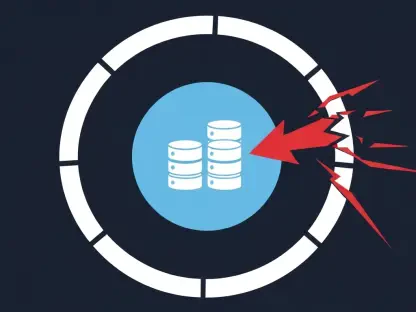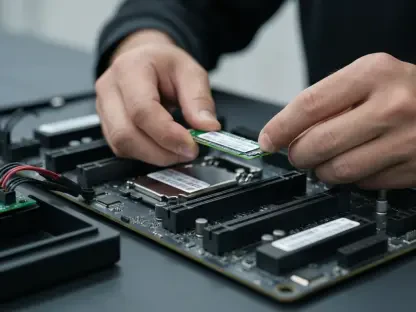Imagine a world where maintaining a rolling-release distribution like Arch Linux no longer feels like an uphill battle against endless manual updates, and for developers and maintainers, the constant task of tracking upstream releases and ensuring packages remain current is no longer a daunting, time-consuming endeavor. Enter Bumpbuddy, a groundbreaking tool designed to automate critical aspects of package management, promising to lighten the load for those who keep Arch Linux’s ecosystem thriving. This review delves into how this innovative daemon could transform workflows, exploring its core features, potential impact, and the challenges it faces in its early stages of adoption.
Unveiling the Power of Automation
At its core, Bumpbuddy operates as a background service that tirelessly monitors package versions within Arch Linux repositories. Unlike traditional methods that rely on manual checks, this tool detects outdated software by comparing current versions against upstream releases, ensuring nothing slips through the cracks. Its seamless operation as a daemon means maintainers no longer need to allocate hours to routine surveillance, freeing them to focus on more complex tasks.
A standout capability is Bumpbuddy’s ability to automatically generate issues on GitLab when discrepancies are found. This feature acts as an alert system, notifying maintainers of updates without requiring any manual intervention. By integrating with GitLab’s infrastructure, it creates a direct line of communication, ensuring timely responses to version mismatches.
Further enhancing its utility, Bumpbuddy leverages configuration files like .nvchecker.toml to streamline its tracking process. This setup allows for precise monitoring tailored to specific packages, reducing the risk of oversight. For a distribution known for its hands-on approach, such automation marks a significant shift toward efficiency and reliability in package maintenance.
Benefits for Maintainers and Beyond
The immediate advantage of Bumpbuddy lies in its capacity to reduce the workload for Arch Linux maintainers. Commands like pkgctl version check, once a staple of the update process, become obsolete as the tool handles version verification autonomously. This reduction in repetitive tasks allows maintainers to allocate their expertise to debugging or enhancing package builds rather than chasing updates.
Beyond the direct impact on maintainers, end users stand to gain indirectly from this innovation. With fewer outdated packages lingering in repositories, software remains current, enhancing system stability and security for the broader community. Additionally, the transparency provided by automated issue creation offers users clearer insight into why certain updates might be delayed.
This dual benefit underscores Bumpbuddy’s potential to bridge the gap between maintainers and users. While primarily a tool for developers, its ripple effects could elevate the overall user experience, making Arch Linux a more polished and responsive distribution. The promise of fewer manual flagging requirements further empowers the community to rely on a more proactive update system.
Future Enhancements on the Horizon
Looking ahead, the development team behind Bumpbuddy has ambitious plans to expand its functionality. A web-based dashboard is in the works, poised to offer maintainers an intuitive interface for overseeing package statuses and managing alerts. Such a feature could simplify complex workflows, making the tool accessible even to those less comfortable with command-line operations.
Another anticipated addition is an API endpoint designed for integration with existing tools like pkgctl version check. This would enable seamless compatibility, allowing maintainers to incorporate Bumpbuddy into their current setups without disruption. Moreover, the ability to manage “out of date” statuses directly on Archweb could centralize package oversight, creating a unified platform for update management.
These forthcoming updates suggest a vision for Bumpbuddy as a comprehensive solution rather than a niche utility. If realized, these enhancements could position it as an indispensable asset within the Arch Linux ecosystem, catering to a wide range of needs from monitoring to administrative control. The trajectory indicates a commitment to evolving with community demands over the coming years.
Implications for the Arch Linux Ecosystem
For the Arch Linux community, Bumpbuddy represents a targeted solution aimed at developers and maintainers, streamlining the intricate process of package upkeep. By automating routine checks and notifications, it addresses a critical pain point in a distribution where constant updates are the norm. This focus on backend efficiency could redefine how maintainers approach their responsibilities.
The broader implications extend to the ecosystem’s overall health, as automation fosters greater reliability in software availability. With packages updated more promptly, the distribution could see improved consistency, reducing the frequency of user-reported issues. This shift might also encourage more contributors to engage with package maintenance, knowing that tools like Bumpbuddy ease the burden.
Ultimately, the tool’s integration could herald a new era of efficiency for rolling-release distributions. By minimizing human error and enhancing update cycles, Bumpbuddy has the potential to strengthen Arch Linux’s reputation as a cutting-edge yet manageable system. Its influence might even inspire similar innovations in other open-source communities seeking to modernize package management.
Navigating Challenges and Limitations
Despite its promise, Bumpbuddy faces hurdles in its current form, primarily due to its limited availability. As of now, it is not listed in Arch Linux’s default repositories or on Archweb, leaving potential users without clear installation guidance. This gap highlights the tool’s early-stage status, posing a barrier to widespread adoption among maintainers eager to test its capabilities.
Information scarcity adds another layer of difficulty, with detailed documentation or community discussions remaining sparse beyond initial announcements. This lack of resources could slow down early feedback loops crucial for refining the tool. Without robust support or tutorials, even tech-savvy maintainers might hesitate to experiment with an unproven solution.
Moreover, as a nascent project, Bumpbuddy may encounter initial bugs or compatibility issues that require extensive testing to resolve. The absence of a mature user base to report such problems means development might progress more slowly than anticipated. Community engagement and patience will be essential to iron out these kinks and ensure the tool meets its full potential.
Final Thoughts and Next Steps
Reflecting on the evaluation, Bumpbuddy emerged as a promising yet underdeveloped asset for Arch Linux maintainers, showcasing impressive automation for package monitoring and issue creation. Its capacity to alleviate manual workloads stood out, though the lack of accessibility in repositories tempered initial enthusiasm. The planned features, such as a web dashboard and API integration, hinted at a transformative future that remained just out of reach during this assessment.
Moving forward, the Arch Linux community should prioritize integrating Bumpbuddy into official channels, providing clear installation paths and documentation to encourage adoption. Maintainers and developers are encouraged to contribute feedback as the tool evolves, helping shape its trajectory to address real-world needs. Collaboration between the development team and users will be key to refining its functionality.
Additionally, exploring partnerships with other open-source projects could accelerate Bumpbuddy’s growth, potentially adapting its framework for broader applications. As the tool matures, establishing a robust support network will ensure it becomes a cornerstone of package management, not just for Arch Linux but as a model for efficiency across distributions. The journey ahead holds immense possibility if guided by collective effort and innovation.









